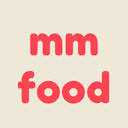Lost in Translation: How Untranslatable Food Words Impact Diners with Dietary Needs
Untranslatable food words like umami, terroir, or al dente hide critical dietary info. Discover how mm food's AI decodes culinary mysteries to keep restricted diners safe.
MM Food Team

Dine Confidently Anywhere
Get the MM Food app for instant menu translation and allergy detection.
Lost in Translation: How Untranslatable Food Words Impact Diners with Dietary Needs
Imagine sitting at a tucked-away trattoria in Rome or a street food stall in Bangkok. You're handed a menu filled with culinary poetry – words like "umami," "terroir," or "julienne" – that resist simple translation. These untranslatable food terms capture cultural nuances, cooking techniques, and sensory experiences unique to their language. But for diners with dietary restrictions, these beautiful words can become dangerous puzzles.
The Delicious Dilemma
Untranslatable food words often hide critical details about ingredients and preparation:
- "Al dente" (Italian): Pasta texture matters! For gluten sensitivities, knowing if it's cooked to "firm bite" perfection doesn't reveal wheat content.
- "Wok hei" (Cantonese): That smoky wok fragrance? It hints at high-heat cooking but not potential shellfish or soy sauce allergens in the dish.
- "Piquant" (French): "Spicy sharpness" could mean chili peppers (nightshade allergy risk), mustard seeds, or horseradish.
- "Sofrito" (Spanish/Latin): A flavor base of sautéed veggies sounds safe... unless you're allergic to onions or garlic buried in the mix.
Even seemingly familiar terms like "umami" (Japanese savory taste) carry ambiguities – is it from mushrooms (safe) or fish sauce (problematic for vegans/iodine allergies)?
Why Standard Translation Fails
Literal translation loses culinary context:
- Regional Nuances: Mexican "adobo" might use chili peppers, while Filipino versions add vinegar – critical for acid-sensitive diets.
- Technique Mysteries: Does French "confit" imply duck fat (animal product) or olive oil?
- Hidden Ingredients: Thai "larb" could contain peanuts, while Iraqi "tabbouleh" might have bulgur wheat (gluten!).
For diners managing allergies, diabetes, or ethical diets like veganism, these gaps aren’t just confusing – they’re potentially hazardous.
How MM Food Cracks the Culinary Code
Our app transforms untranslatable terms from barriers to safe enjoyment:
1. Cultural Intelligence Engine
Goes beyond dictionaries to explain culinary context:
- "Terroir describes how soil impacts wine flavors, but doesn't indicate sulfite levels (common allergen)."
- "Gremolata: An Italian herb condiment typically contains garlic, lemon zest, and parsley."
2. Dietary Restriction Analysis
Cross-references your profile against ingredient intelligence:
- "⚠️ Japanese tsukemono: May contain hidden soy sauce (gluten/wheat)."
- "✅ Spanish escalivada: Roasted vegetables. Safe for vegan and nut-free diets."
3. Smart Substitution Alerts
Flags ambiguous dishes and suggests safer alternatives:
- "Ask if rendang (Indonesian curry) uses coconut milk (dairy-free) or peanuts."
- "Try ghormeh sabzi (Persian herb stew) – confirmed vegan option."
Dine Without Doubt
Untranslatable words enrich global gastronomy but shouldn’t threaten your health. With MM Food, that mysterious menu term becomes a gateway to confident culinary adventure – fully translated and dietary-restriction vetted. Unlock the world's flavors safely.
Download MM Food today: Your passport to worry-free global dining.
Tags

Dine Confidently Anywhere
Get the MM Food app for instant menu translation and allergy detection.